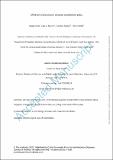SARS-CoV-2 transmission dynamics should inform policy
Abstract
It is generally agreed that striking a balance between resuming economic and social activities and keeping the effective reproductive number (R0) below 1 using non-pharmaceutical interventions is an important goal until and even after effective vaccines become available. Therefore, the need remains to understand how the virus is transmitted in order to identify high-risk environments and activities that disproportionately contribute to its spread so that effective preventative measures could be put in place. Contact tracing and household studies in particular provide robust evidence about the parameters of transmission. In this viewpoint, we discuss the available evidence from large-scale, well-conducted contact tracing studies from across the world and argue that SARS-CoV-2 transmission dynamics should inform policy decisions about mitigation strategies for targeted interventions according to the needs of the society by directing attention to the settings, activities and socioeconomic factors associated with the highest risks of transmission.
Citation
Cevik , M , Marcus , J L , Buckee , C & Smith , T C 2020 , ' SARS-CoV-2 transmission dynamics should inform policy ' , Clinical Infectious Diseases . https://doi.org/10.1093/cid/ciaa1442
Publication
Clinical Infectious Diseases
Status
Peer reviewed
ISSN
1058-4838Type
Journal article
Description
Funding: JM is supported in part by the U.S. National Institute of Allergy and Infectious Diseases [K01AI122853].Collections
Items in the St Andrews Research Repository are protected by copyright, with all rights reserved, unless otherwise indicated.

